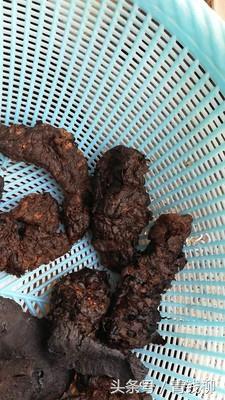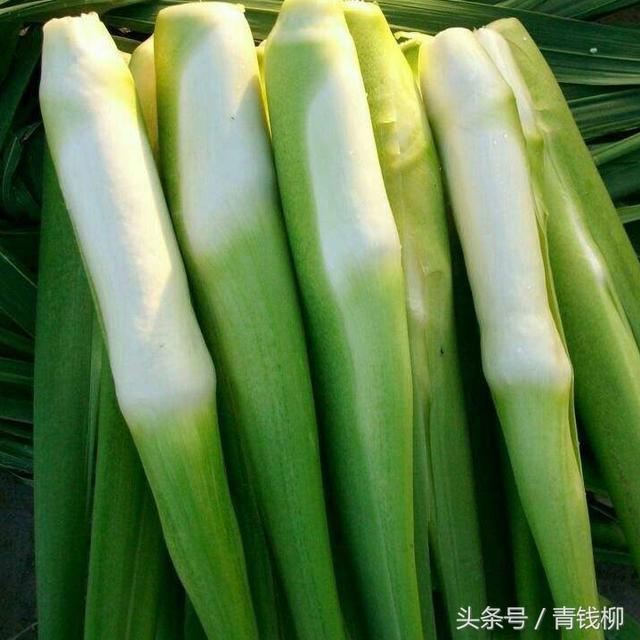High-yield cultivation techniques of Rehmannia glutinosa with all-film ridge cultivation

High-yield cultivation techniques of Rehmannia glutinosa with all-film ridge cultivation
Rehmannia glutinosa, alias, kettle flower, mountain tobacco root, etc., is a perennial herbal medicinal plant of Scrophulariaceae, with a height of 10-30 cm and dense gray-white multicellular villous and glandular hairs on the surface of stems and leaves. The rhizome is fleshy, fresh yellow, 1.5 to 5.5 cm in diameter, and the stem is purple-red. The leaves usually integrate rosette at the base of the stem and shrink strongly upward into bracts, or gradually shrink and alternate on the stem. Radix Rehmanniae can be divided into fresh Radix Rehmanniae, Radix Rehmanniae, Radix Rehmanniae and so on. Tuber root is rich in catalpol, alkaloids, amino acids, Rehmannia and other medicinal ingredients, which has the effects of clearing away heat and cooling blood, tonifying yin and invigorating fluid, nourishing yin and tonifying marrow, and can be used for diseases such as fever, yin injury, sore throat, internal heat of yin deficiency, rash, hematemesis, liver and kidney yin deficiency, yellowing of blood deficiency, vertigo tinnitus, strong heat and dizziness, dry mouth and tongue, etc. it is the main ingredient of many traditional Chinese medicine and the main raw material of proprietary Chinese medicine. Therefore, the market price of Rehmannia glutinosa has been rising continuously in recent years, the average price of fresh Rehmannia glutinosa and raw Rehmannia glutinosa are stable at 2 yuan / kg and 15 yuan / kg, respectively, and the average income is 52 500 yuan / hm 2. The economic benefit is good. At present, the cultivation area of traditional Chinese medicine in Huanxian County is about 2,500 hm 2, of which the cultivation area of Rehmannia glutinosa is more than 200 hm 2. As a poverty alleviation industry in the county, the traditional Chinese medicine industry is becoming bigger and stronger. In order to make this poverty alleviation industry advance smoothly, to ensure the increase of farmers' production and income, and to achieve accurate poverty alleviation in the county, the high-yield cultivation techniques of Rehmannia glutinosa with all-film ridge cultivation are summarized as follows, which can be used as a reference for agricultural science and technology workers and farmers.
1 selection of land for soil preparation and fertilization
Rehmannia glutinosa likes warm climate and is more hardy. The cultivation of Rehmannia glutinosa should choose slightly alkaline loam and sandy loam with mild climate, sufficient sunshine, good drainage, deep soil, fertile and loose soil. The previous crop is suitable for Gramineae crops such as wheat and corn, but not for cucurbitaceae crops such as legumes, potatoes and melons.
After the plot is selected, the stubble should be ploughed and killed in time after the previous crop harvest, so as to promote soil ripening, improve soil structure, improve soil fertility, and enhance soil water storage and fertilizer conservation capacity. After the soil is thawed in the early spring, rotary ploughing and raking ensures that there are no large soil blocks and stubble in the tillage layer, so that it is deep, fine, flat, clean, virtual and solid, and the ground is flat, which is convenient for ridging and film mulching.
The planting density of Rehmannia glutinosa is high, and the application of sufficient basic fertilizer is the guarantee of high yield. generally, combined with spring rotary tillage, mature farm manure 2530 t/hm 2, urea 500,600 kg/hm 2, phosphate fertilizer 700,800 kg/hm 2, potassium sulfate 30000400 kg/hm 2 are applied once.
2 ridging and film mulching
2.1 artificial ridging and film mulching
It was adopted to cover the ridge and film in spring, that is, immediately after the soil was thawed in the first ten days of March. On the finished plot, row according to the band of 110 cm, ridge with a step plow or ridger, require only one ridge, 110 cm wide at the bottom of the ridge, 80 cm wide and 15 cm high, and flatten the ridge surface with a rake. The polyethylene plastic film with thickness of 0.008 ~ 0.010 mm and width of 120 cm was selected to cover the ridge surface with a soil strip every 2 ~ 3 m to prevent the film from being exposed by strong wind. The film is connected with the film in the middle of the furrow and compacted with soil.
2.2 Mechanical ridging and film mulching
After the soil was thawed in the first ten days of March, the potato ridge mulching machine was used to ridge and cover the film at one time. The polyethylene plastic film with a thickness of 0.008 to 0.010 mm and a width of 120 cm was selected to cover the ridge bottom width of 110 cm, ridge width of 80 cm and ridge height of 15 cm. The film was connected with the film in the middle of the ridge and was compacted with soil. At the same time of mechanical ridging and film mulching, artificially press a soil strip every 2 to 3 m on the ridge surface to prevent the strong wind from uncovering the film.
3Variety selection
The varieties of Rehmannia glutinosa suitable for planting in Huanxian County are Golden Queen, Beijing No. 1, Beijing No. 2, Beijing No. 3, Wen 85-5, Qinhuai No. 1 and Shengjin No. 1, etc. These varieties are resistant to drought and cold, strong resistance to adversity, wide adaptability and good marketability.
4 seed treatment
The cultivation of Rehmannia glutinosa generally adopts the method of root breaking reproduction, that is, asexual reproduction, and the seeds must be virus-free seeds. Because Rehmannia glutinosa is very easy to be infected with virus disease, after infection, the leaves deform and wrinkle, the plant becomes smaller, the photosynthesis decreases, the growth potential declines, the quality becomes worse, the root becomes smaller, deformed, and the yield decreases. The use of virus-free seeds can improve quality and greatly increase yield. Therefore, the cultivation of Rehmannia glutinosa must go to the seed department to purchase the virus-free original seed or the first-class improved seed, and the original seed can remain after one year of planting. The virus-free tuber roots with a diameter of 0.8-1.0 cm, fresh, robust, disease-free, pest-free and non-damage should be selected as seeds. Before sowing, put it in a warm place to promote sprouting for 20 to 30 days, break the dormancy period, fold it into a small section with 3-5 bud eyes and 4-5 cm before sowing, treat the wound with plant ash and dry it in low light for 2 hours before planting. Or spread out the folded seeds, spray the wound with 50% carbendazim wettable powder 500: 600 times, air in the sun for 3 hours and 4 hours before planting.
5 sowing at the right time
The sowing time of Rehmannia glutinosa in Huanxian County is generally April 15-30, and it takes 25 days from sowing to emergence. The lower the ground temperature is, the longer the emergence time is. Sowing too early, low soil temperature, prone to rotten seed phenomenon, resulting in lack of seedlings and broken ridges; sowing too late, delayed growth period, affecting yield.
Sow seeds with a shovel of 5 cm in diameter, break the plastic film vertically with a shovel, break the soil 6 cm deep, open it, block the soil with a shovel, lay the seeds flat in the hole, pull out the shovel, and compact the seeds with soil. Take out the fine soil under the film to compact the break, or compact the break with the soil of the soil belt, in order to preserve the soil moisture and increase the temperature, prevent the strong wind from revealing the film, and improve the emergence rate. Generally, sowing 3 rows in one ridge, sowing depth 5 ~ 6 cm, plant spacing 30 ~ 35 cm, row spacing 25 ~ 30 cm, staggered sowing between rows and rows, seedling preservation was 75000 ~ 95000 plants / hm 2.
6. Field management
6.1 Management at emergence stage
The whole film ridge cultivation of Rehmannia glutinosa can emerge seedlings after sowing for about 30 days. at this time, it is necessary to observe in the field, break the hardening in time, release seedlings, straighten and press the soil. If it is found that there is a lack of seedlings, make up the seedlings in time.
6.2 pinching flowers
Some varieties of Rehmannia glutinosa flowered earlier and entered the reproductive growth stage ahead of time, which consumed nutrients and affected the yield. Therefore, Rehmannia glutinosa flowers and fruits should be pinched in time, or even with buds, to promote stem and leaf growth, improve photosynthesis efficiency and increase yield.
6.3 topdressing
During the whole growth period of Rehmannia glutinosa, topdressing should be applied twice. The first topdressing is in the stem and leaf growth period, that is, from the middle of June to the middle of July, nitrogen fertilizer should be applied mainly to promote stem and leaf growth and increase leaf area. Urea 150-225 kg/hm 2 should be applied generally. The topdressing method was to apply urea or urea aqueous solution between rows and rows with a topdressing gun.
During the second topdressing period from mid-August to mid-September, nitrogen, phosphorus and potassium compound fertilizer or potassium dihydrogen phosphate should be applied mainly to promote root expansion and increase yield. Diammonium phosphate 150: 225 kg/hm 2 (same as above) or foliar potassium dihydrogen phosphate solution should be applied.
7 Prevention and control of diseases, pests and weeds
7.1 disease
The common diseases of Rehmannia glutinosa are spot blight, ring disease, wilt disease and virus disease. Rehmannia spot blight mainly harms leaves and belongs to fungal diseases. When the disease occurs, there are round and irregular yellow-brown spots on the leaf surface with small black spots, and in serious cases, the whole leaf or the whole plant dies. At the initial stage of the disease, the diseased leaves were removed and foliar sprayed with 50% carbendazim wettable powder 600 times or 60% Dysen zinc 400 times 500 times, once in 10 days and 3 times in a row.
Rehmannia glutinosa ring disease is in the peak period from June to August, the disease spot is round or nearly round, some are semicircular or irregular, light brown in the initial stage, slightly brown or purplish brown in the later stage, with concentric wheel lines, and the diseased leaves die in severe cases. Bordeaux solution was sprayed at the initial stage of the disease, and 500 times of 70% mancozeb wettable powder or 700 times of 75% chlorothalonil wettable powder was sprayed at the peak of the disease, once in 10 days and 3 times in a row.
Radix Rehmanniae wilt, also known as root rot, began to occur in May and was serious in June-July, harming roots and aboveground stems. At the initial stage of the disease, the petiole showed water-immersed brown spots, the petiole rotted, and the aboveground withered and drooped. 50% carbendazim 1000 times solution can be used to soak seeds for prevention; at the initial stage of the disease, 50% carbendazim 1000 times solution or 50% carbendazim 1000 times solution is used to irrigate the roots once every 7 days for 2 times. After July, foliar spray control of 600 times 800 times solution such as 58% Redomir and 50% carbendazim can be used, spraying once in 10 days and spraying 2 times in a row.
7.2 insect pests
The main pests of Rehmannia glutinosa are red spider, ground tiger and grub. Red spiders can choose 0.9% Chongmike 2000 to 3000 times liquid, or Weilite 1500 times liquid spray to control. Ground tigers and grubs can be treated with 80% trichlorfon wettable powder 100g plus a small amount of water, stir-fried wheat bran or bean cake for 5 kg, and sprinkled in the ridges at dusk, or sprayed at dusk with 2.5% kungfu 1 500 2 000 times or 4.5% cypermethrin 1 500 2 000 times.
7.3 weeding
The plant of Rehmannia glutinosa is short, the occurrence of weeds in the field is serious, and the weeds are artificially weeded more than 3 times in the whole growth period. Timely removal of weeds between rows and under the film to reduce weeds and Rehmannia glutinosa for fertilizer, water and glory, so as not to affect the yield.
8 harvesting and processing
8.1 manual harvesting
In November, after Frosts Descent, most of the leaves of Rehmannia glutinosa can be harvested when they turn yellow and die. First, take off the plastic film, use a hoe or shovel to dig a deep trench of about 35 cm in the ground or side, dig it out one by one, remove the Reed head, stems and leaves, shake the soil, harvest and put it gently, and transport it back for processing.
8.2 Mechanical harvesting
Mechanical harvesting saves time, labor and damage. When harvesting, first remove the plastic film, cut or pull out the aboveground stems and leaves, and use the potato harvester to harvest at one time. Pick up the bags manually and transport them back for processing.
8.3 processing
The extracted Rehmannia glutinosa is fresh Rehmannia glutinosa by removing Reed head, stem and leaf, fibrous root and removing soil impurities. Grade according to size, and bake slowly on the hot Kang over low heat for 3 days. Turn it once a day to make it "sweat". Then bake in high heat for 1 ~ 2 days, until the interior is gradually dry, the color becomes black, the whole body is soft, and the outer skin becomes hard, then store it for 1 ~ 2 days to return to moisture, then spread out and dry to become raw Rehmannia glutinosa. Put the raw Radix Rehmanniae in a jar or other container, add 50% of the yellow rice wine (no more than the raw Rehmannia), heat the pot in a water bath and simmer until the wine is absorbed, and take out the Rehmannia glutinosa in the pot until the outer skin is slightly dry.
- Prev

Planting techniques of organic vegetables in greenhouse
Greenhouse organic vegetable planting technology 1 Analysis of influencing factors of greenhouse vegetable cultivation 1.1 affected by harmful gases, the most essential difference between greenhouse vegetables and ordinary vegetables is the integration of artificial management. Vegetables in the greenhouse have been in a dense state for a long time.
- Next

KAA live broadcast platform mechanism
KAA live broadcast platform mechanism 01 KAA token KAA can also be used for reward, income dividend, gift reward, financial investment, commodity exchange, coin voting, etc. 02 anchors are selected and submitted for data verification.
Related
- Wuhan Hospital Iron Tree Blooming Result Was Instantly Frightened by the Gardener Master
- Which variety of camellia is the most fragrant and best? Which one do you like best?
- What is the small blue coat, the breeding methods and matters needing attention of the succulent plant
- Dormancy time and maintenance management of succulent plants during dormancy
- Minas succulent how to raise, Minas succulent plant pictures
- What are the varieties of winter succulent plants
- How to raise succulent plants in twelve rolls? let's take a look at some experience of breeding twelve rolls.
- Attention should be paid to water control for succulent plants during dormant period (winter and summer)
- Watering experience of twelve rolls of succulent plants
- Techniques for fertilizing succulent plants. An article will let you know how to fertilize succulent plants.

